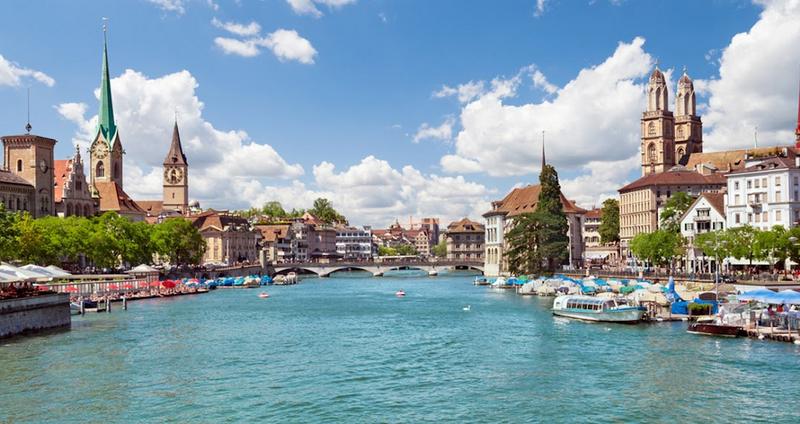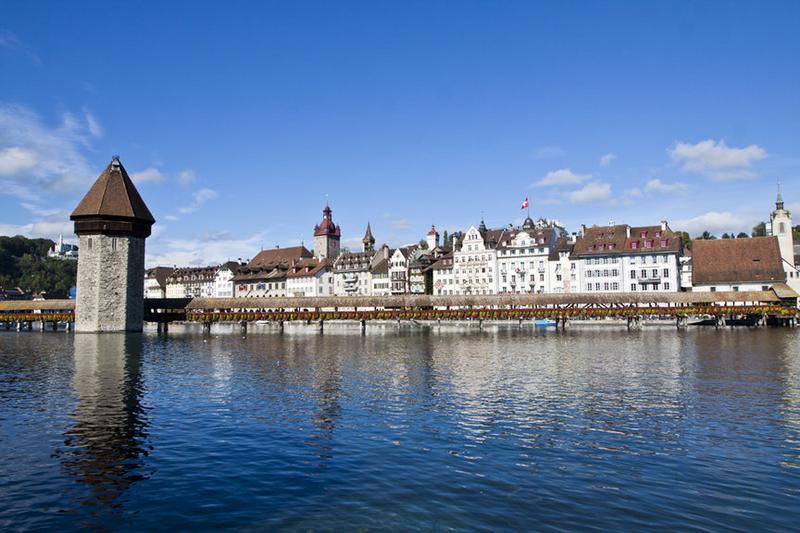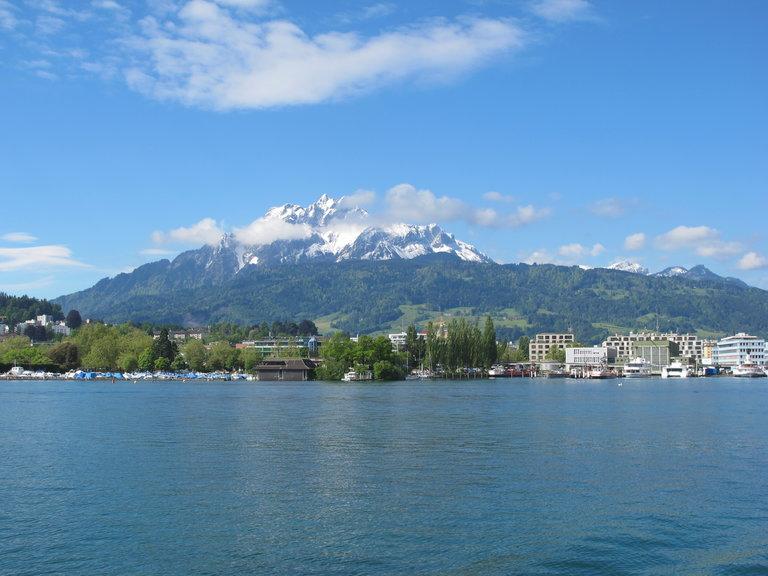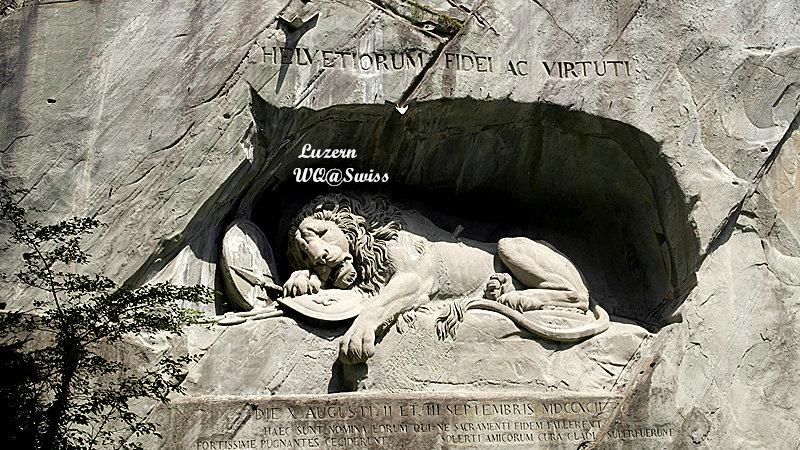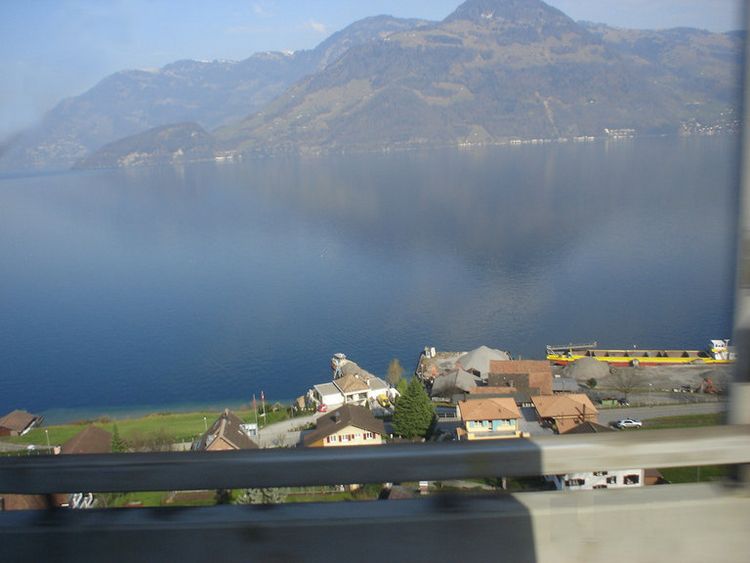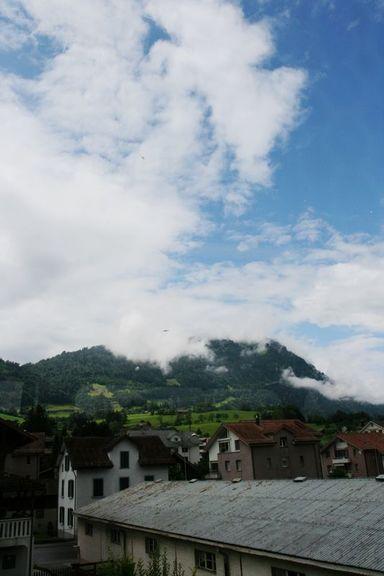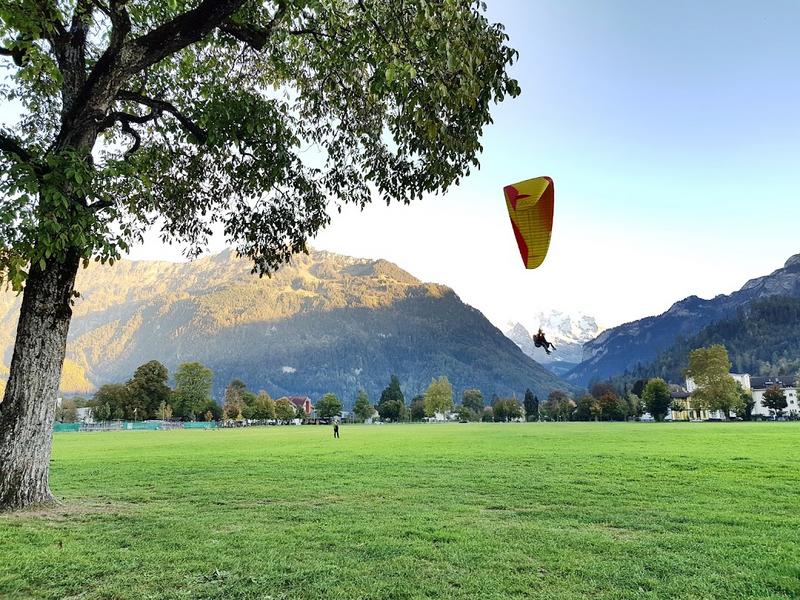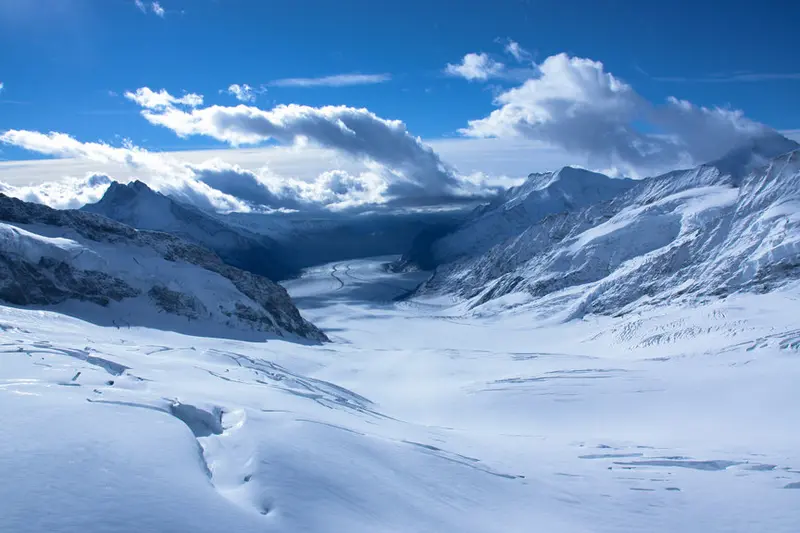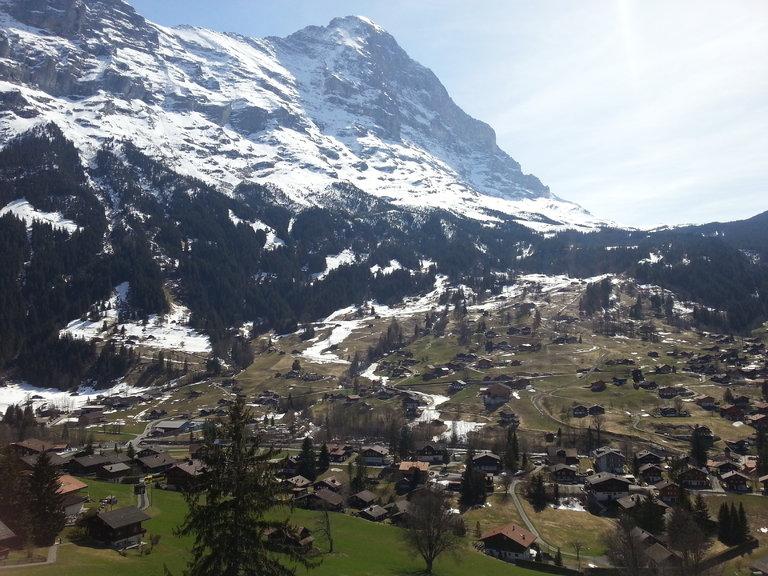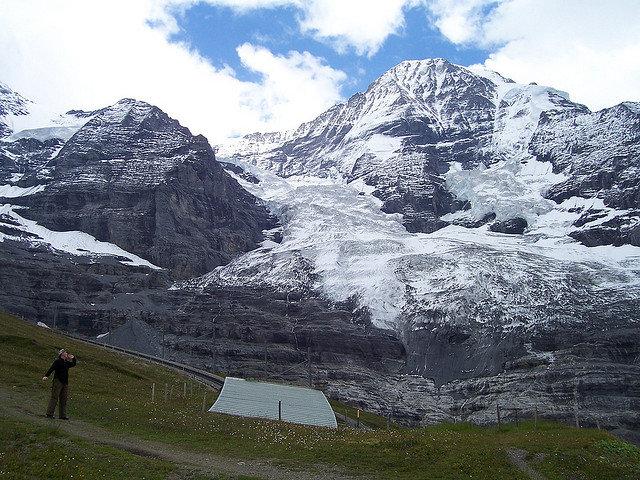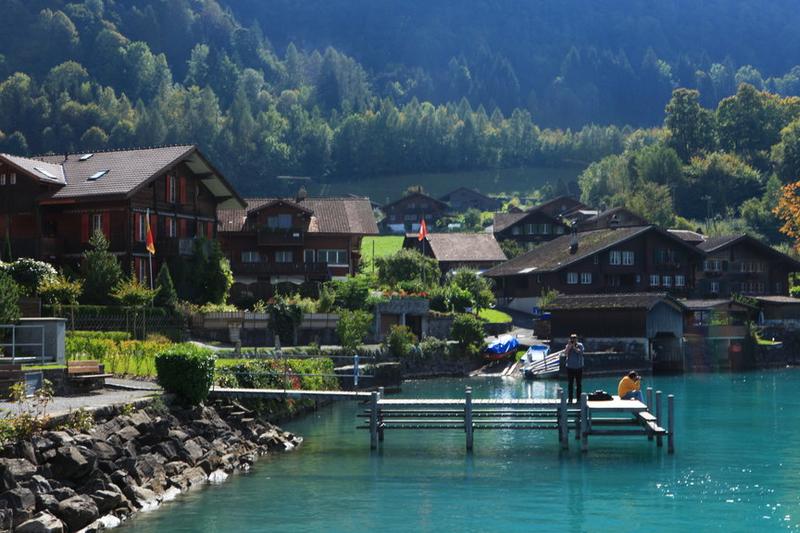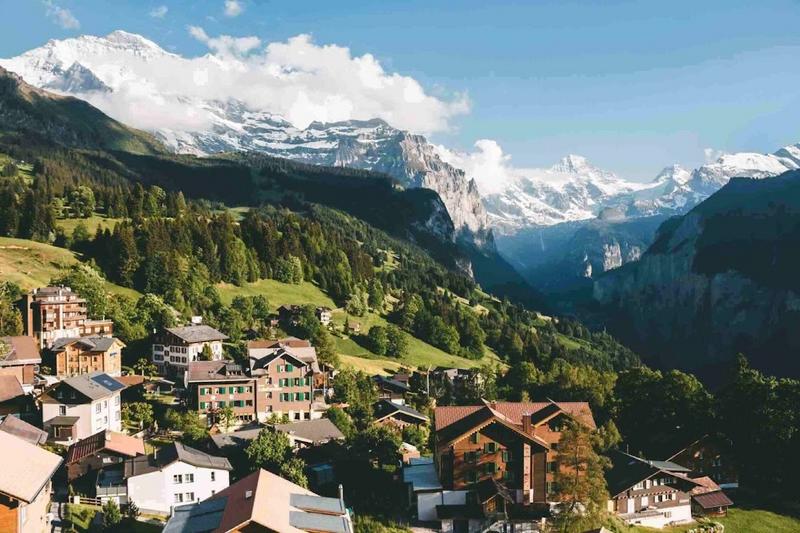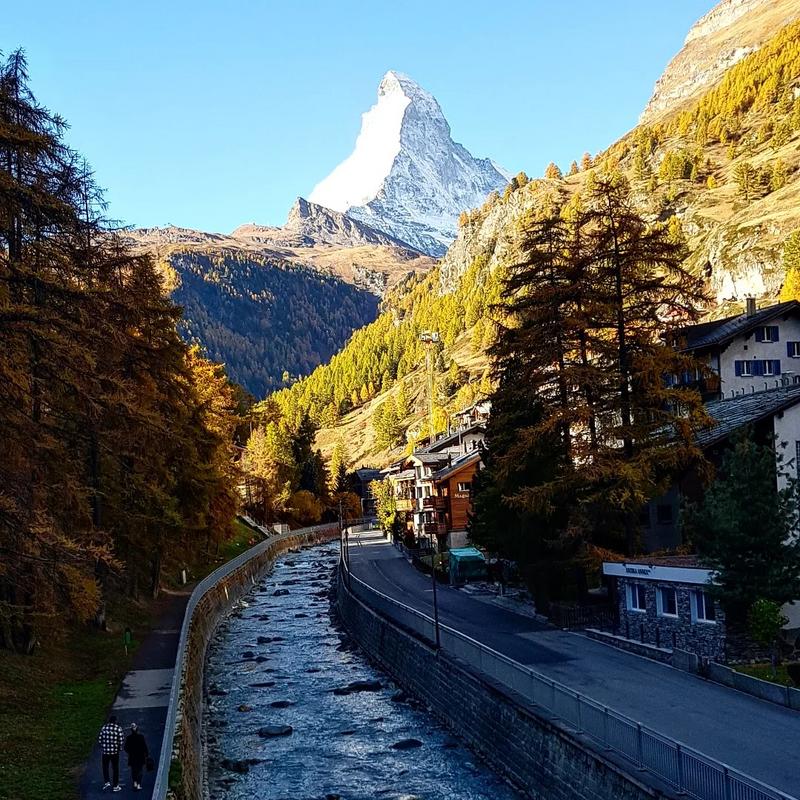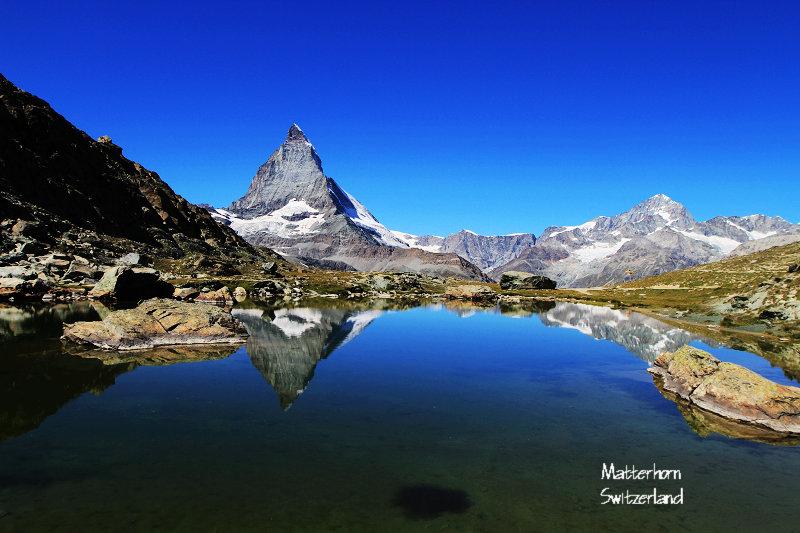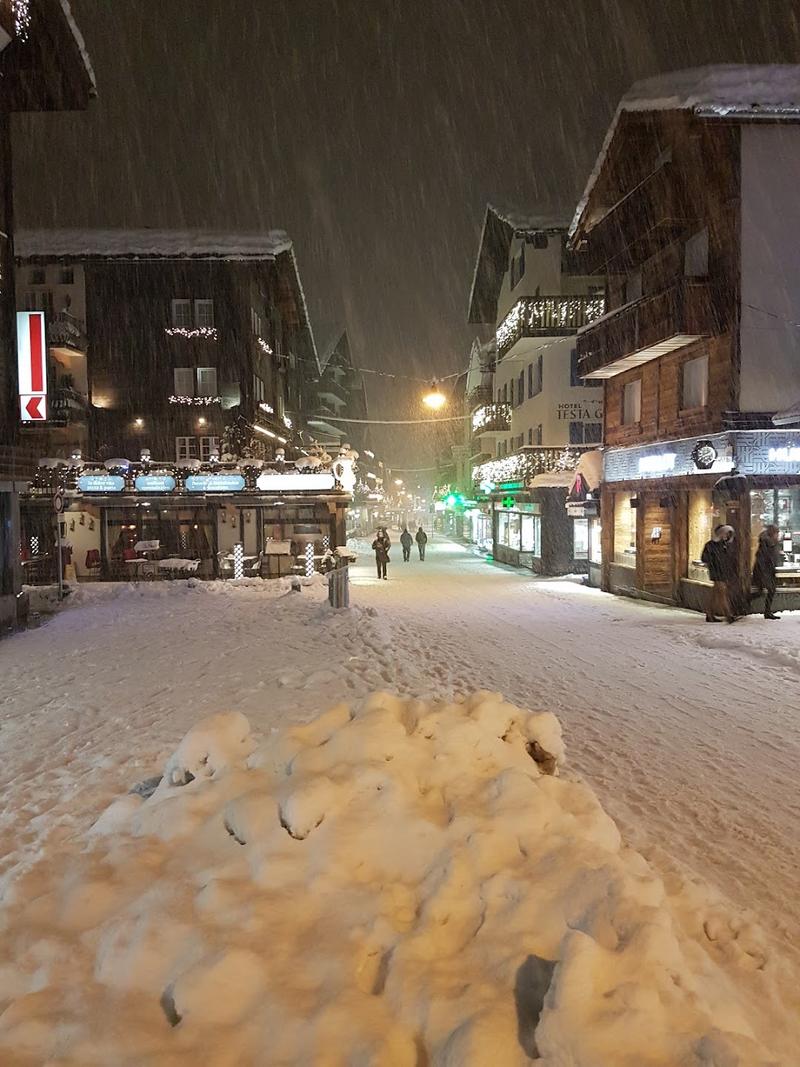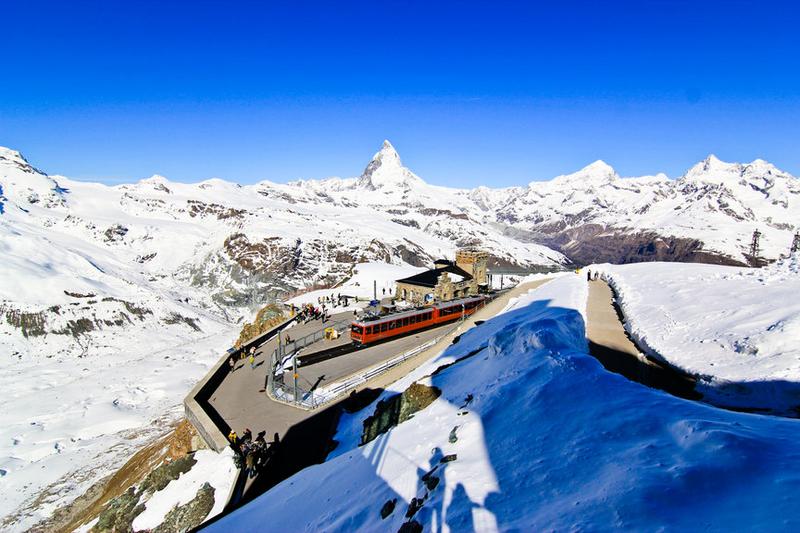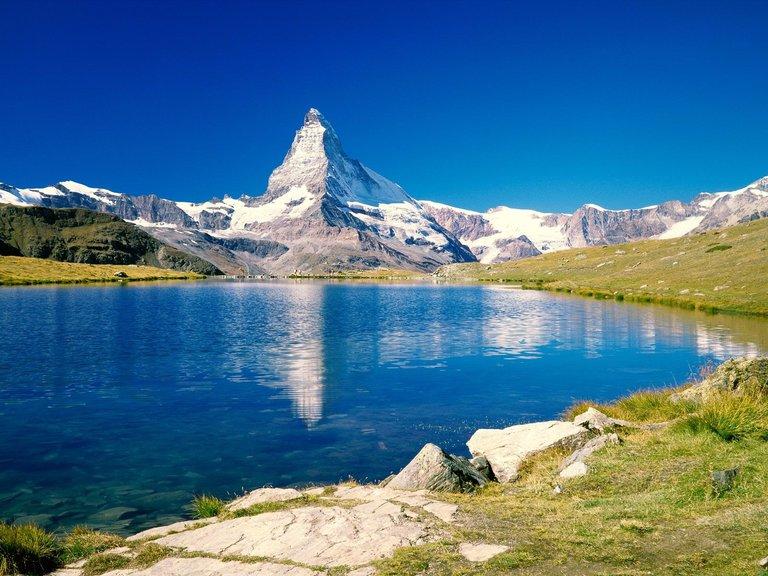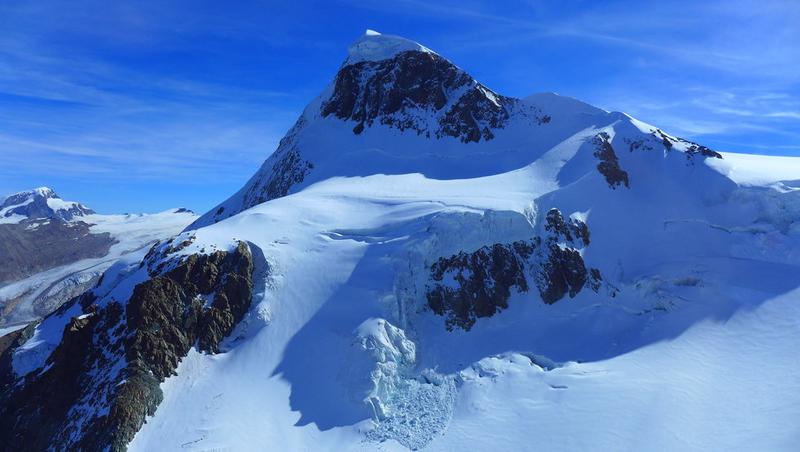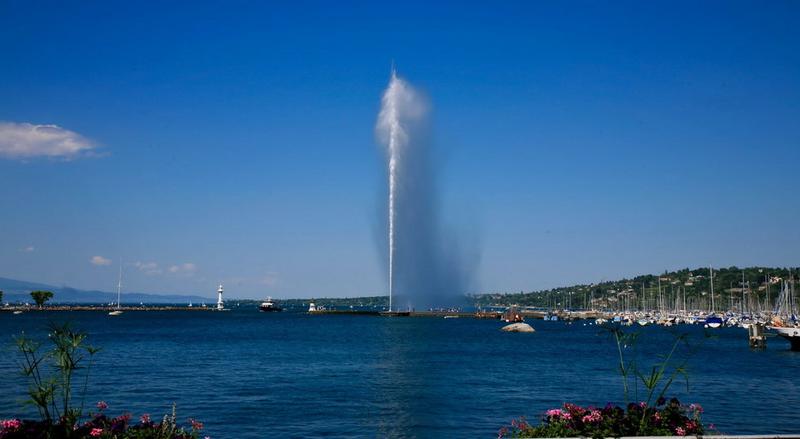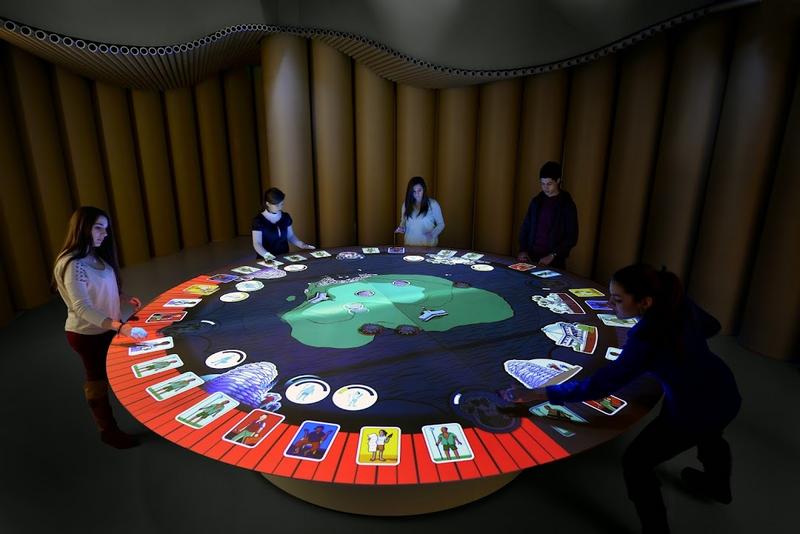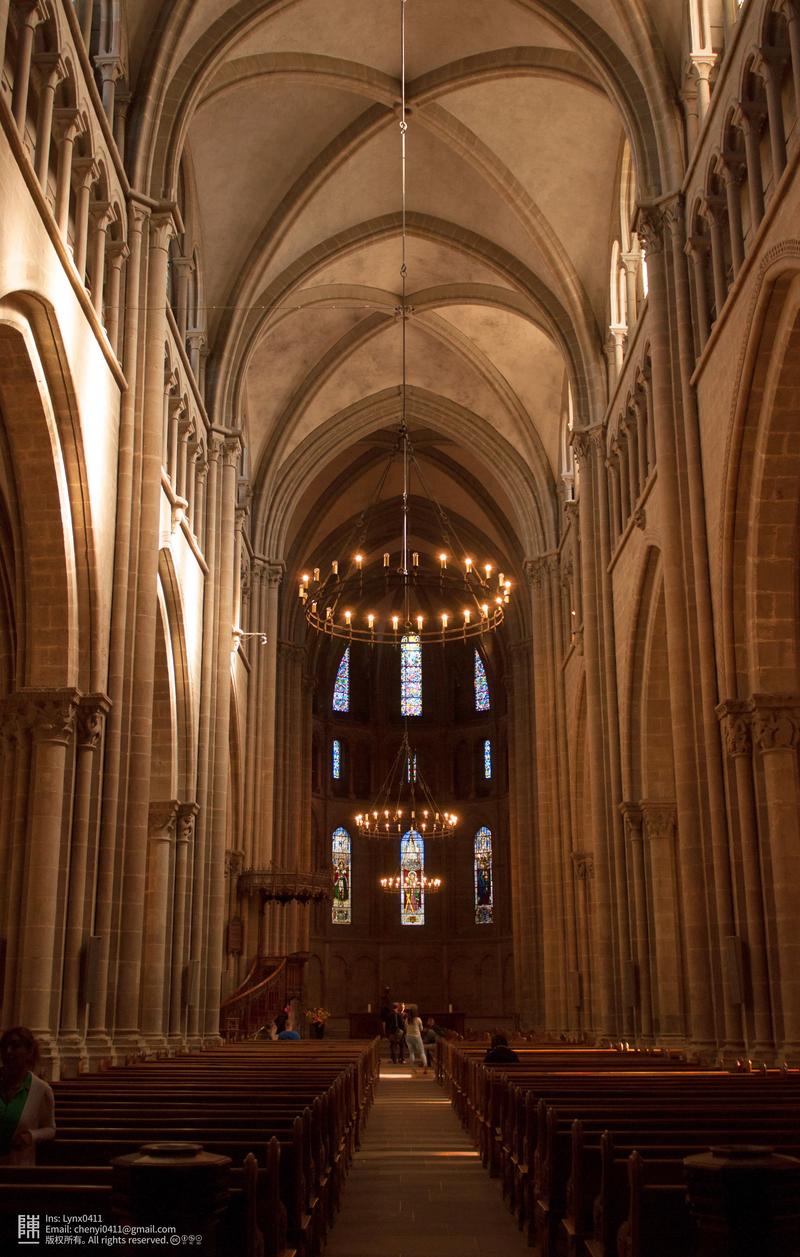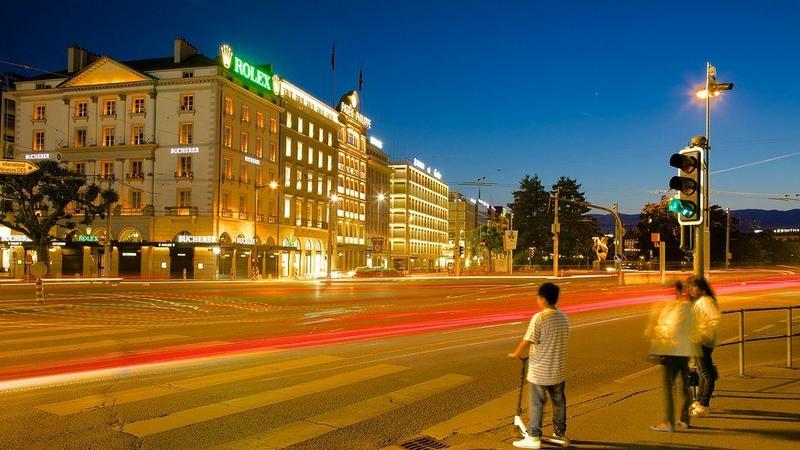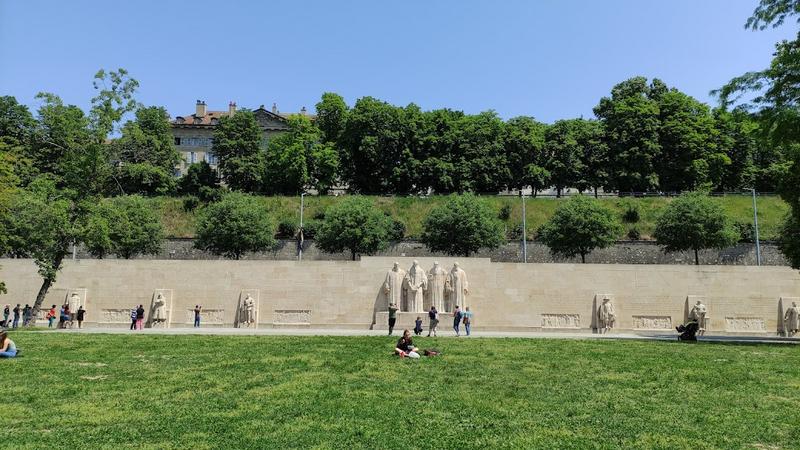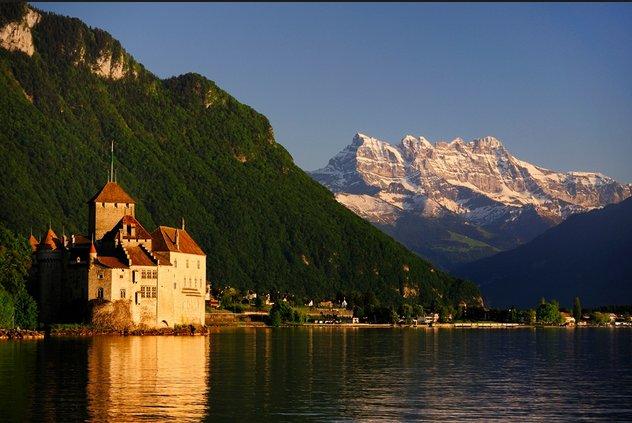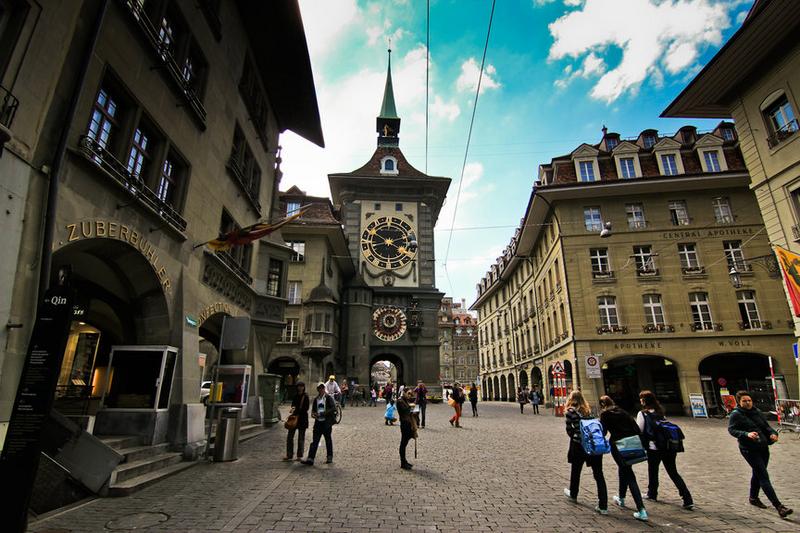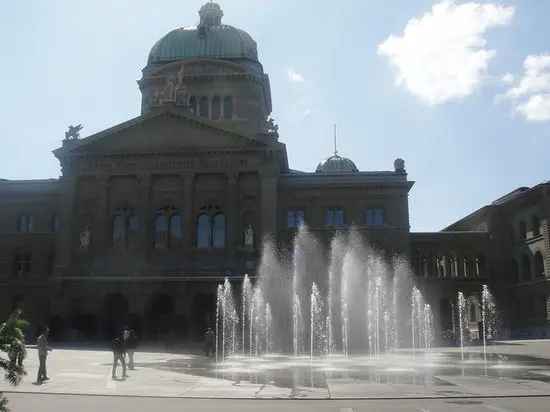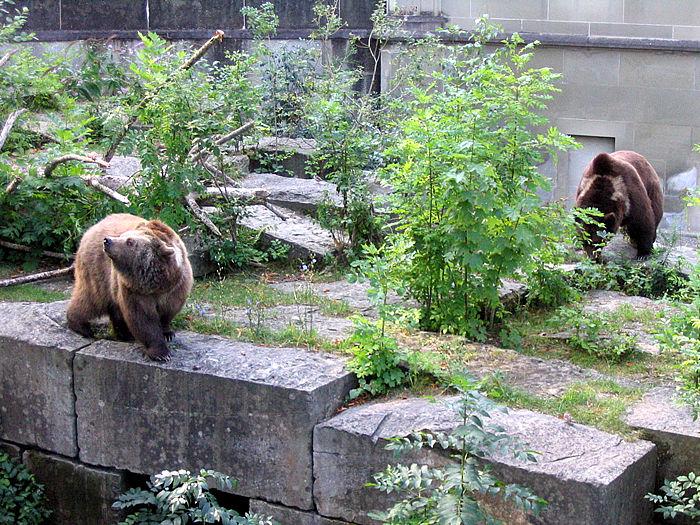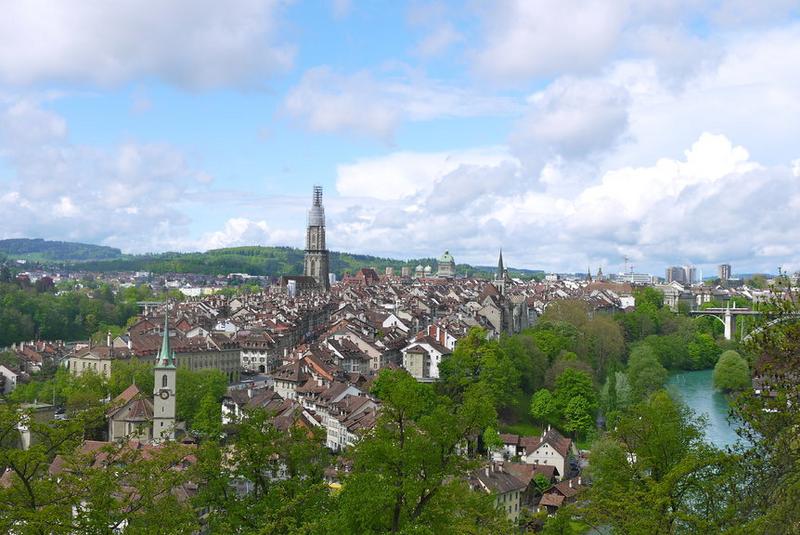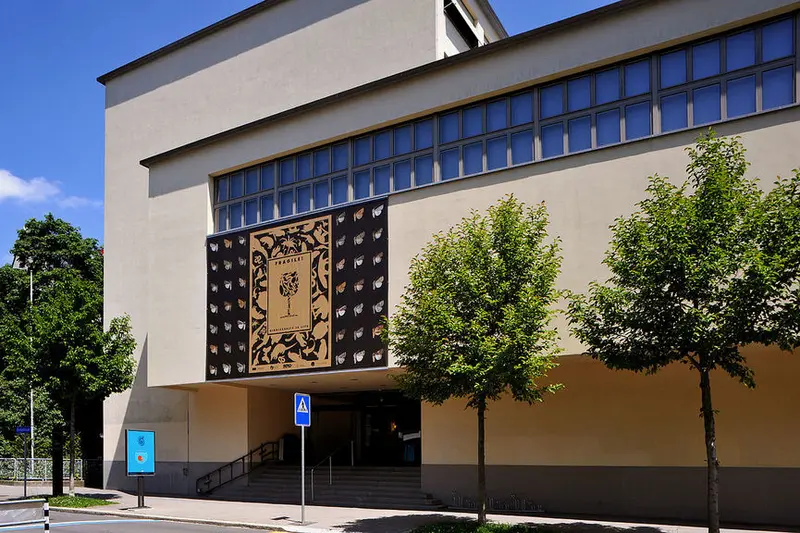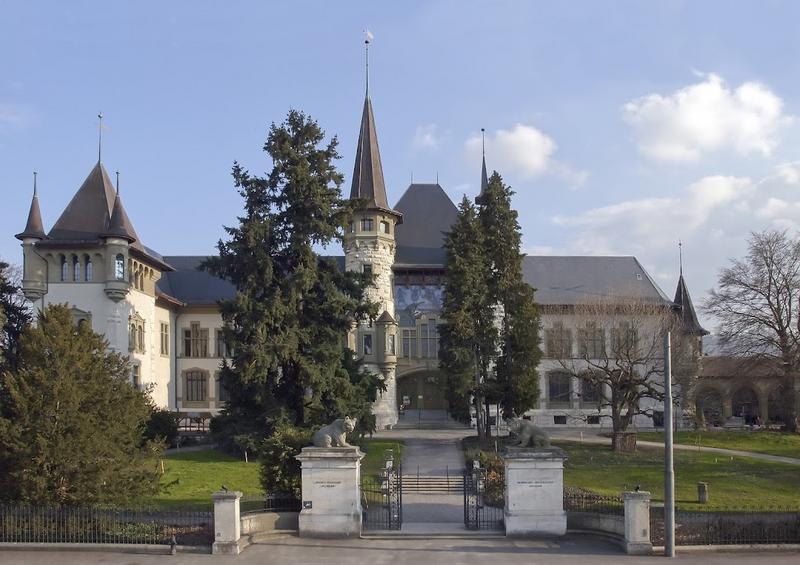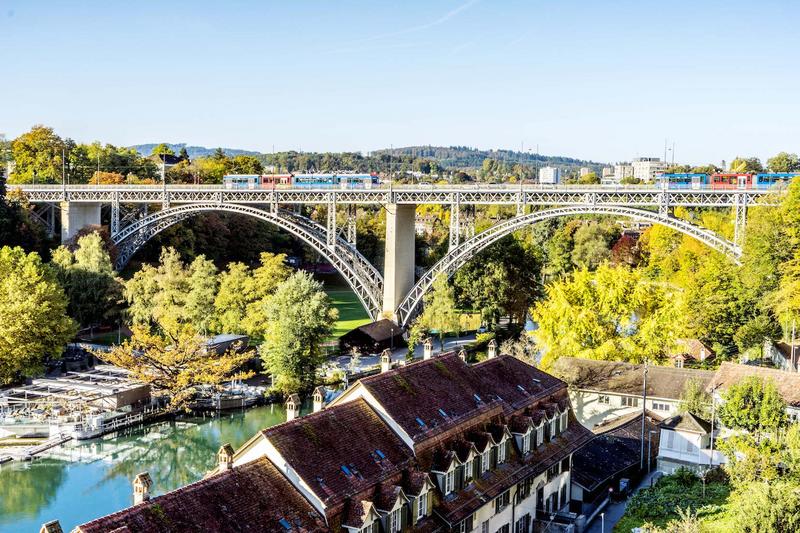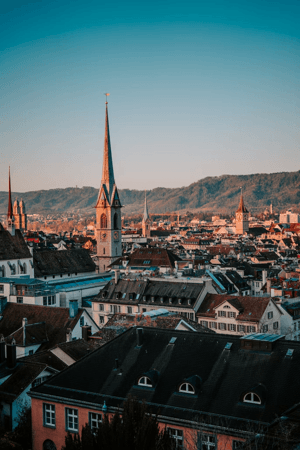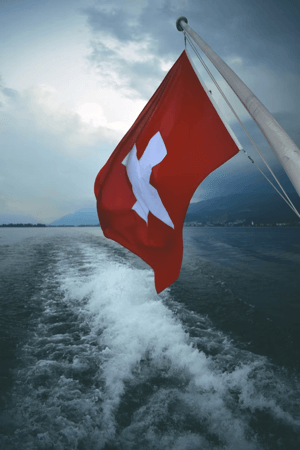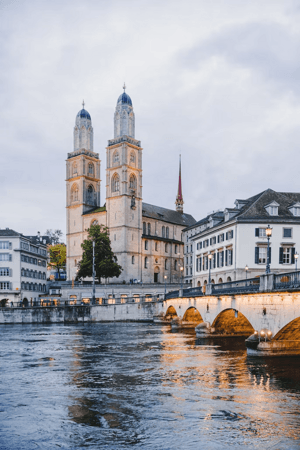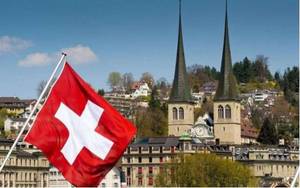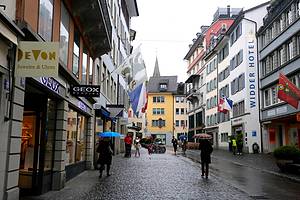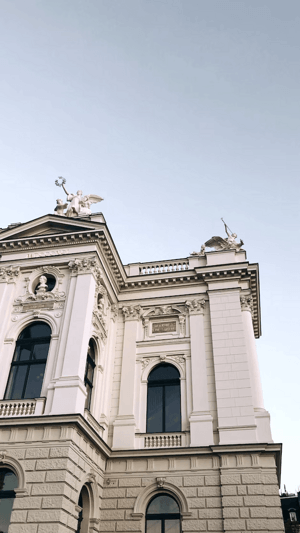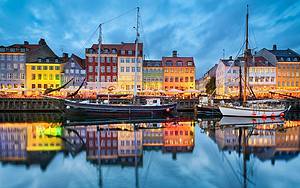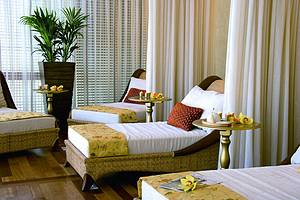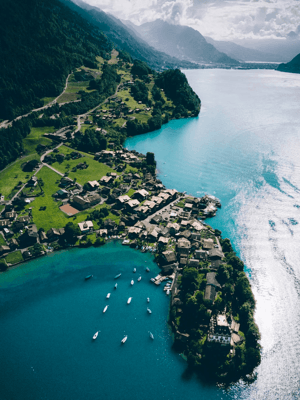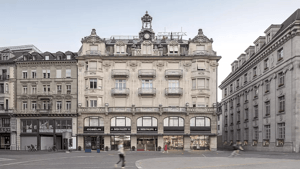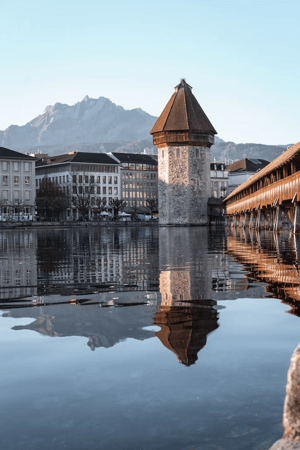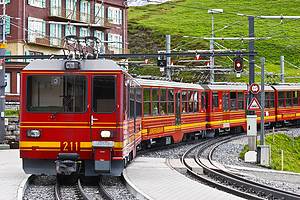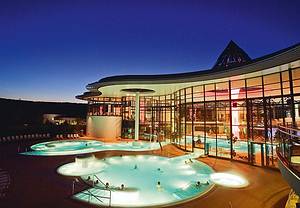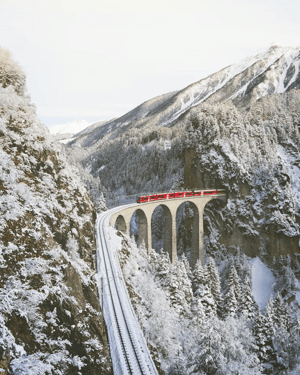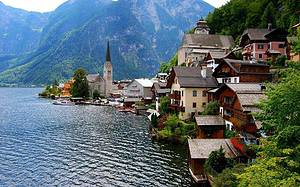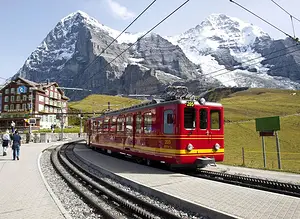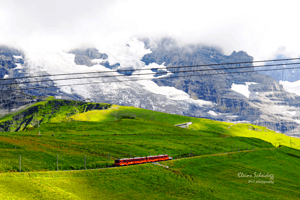11 Days in Switzerland: A Swiss Adventure
7 cities |
33 attraction(s) |
total distance 513
km
 TIPS
TIPS
Day1
Day2
Day3
Day4
Day5
Day6
Day7
Day8
Day9
Day10
Day11
Day1: Zurich
1 attraction(s) ·
0 km
1
Day2: Kriens-Luzern
3 attraction(s) ·
2 km
1
The Kapellbrücke is a 204-meter (670-foot) wooden covered bridge that spans the Reuss River at the outlet of Lake Lucerne in Switzerland. It is a famous tourist attraction and landmark of Lucerne. The bridge was built in 1333 for defense purposes and is brown in color with a red roof. It houses approximately 120 paintings from the 17th century depicting the history of Lucerne. However, most of the bridge was destroyed in a ship collision in 1993, but was quickly rebuilt to its original form. The current bridge is a reconstruction built after 1993. In the middle of the bridge is an octagonal water tower that is 140 feet tall and was historically used as a prison, torture chamber, lookout and treasury. On the north bank of the Kapellbrücke is the St. Peter's Church, which is why it is commonly called the "Church Bridge".
1
km
2
This scenic park is naturally pristine and particularly worth a visit. Its lake is crystal clear and can reflect the spectacular views of the Pilatus mountains and the cityscape of Lucerne. It is truly breathtaking.
1
km
3
This dying lion statue, measuring 10 meters long and over 3 meters tall, was carved by a Danish sculptor in 1821 on natural rock. The statue depicts a suffering lion lying on the ground with a broken spear through its shoulder, next to a shield adorned with the Swiss coat of arms. The purpose of the statue was to commemorate the 786 Swiss mercenaries who sacrificed themselves on August 10, 1792, to protect the safety of the Louis XVI family inside the Tuileries Palace in Paris. There is also a description of the event inscribed below the statue.
At the time, Switzerland was a poor and backward country, and many men became mercenaries in various European countries to make a living. Swiss mercenaries were loyal to their employers and were brave warriors. However, the brutality of the mercenary system is often masked by honor and money. After this event, Switzerland stopped exporting mercenaries, leaving only the famous Swiss Guard to serve the Vatican.
Due to its depiction of loyalty and bravery, the Swiss Guard of the Vatican has been in service to this day. Mark Twain later came to Lucerne and praised this "the most tragic and touching statue in the world," which has been engraved in people's hearts ever since.
Day3: Kriens-Luzern
3 attraction(s) ·
13 km
1
This scenic park is naturally pristine and particularly worth a visit. Its lake is crystal clear and can reflect the spectacular views of the Pilatus mountains and the cityscape of Lucerne. It is truly breathtaking.
2
km
2
Located on the east side of the city center in Switzerland, the traffic museum is famous for showcasing the history of Swiss transportation. The museum attracts tourists with games named after various types of transportation, exhibiting the outstanding development of various forms of transportation in Switzerland. In addition, the museum also has an observatory and a 3D cinema, where tourists can choose to buy joint tickets or visit separately.
11
km
3
Pilatus Mountain is one of the famous attractions in Lucerne, the elevation of which is over 2100 meters. Tourists can take a boat from the pier in the center of Lucerne to the foot of the mountain, and then switch to the steepest cogwheel train in the world. This train journey is unforgettable, and tourists can enjoy magnificent mountain views.
Day4: Interlaken
5 attraction(s) ·
27 km
2
Sizable park with scenic mountain views offering open, grassy spaces for relaxing & recreation.
19
km
3
The Jungfrau, located in the Bernese Highlands, is one of the most famous mountains in Switzerland and one of the most charming landscapes in the area. It has a friendly relationship with the Yellow Mountains in Anhui, China and is greatly favored by Chinese tourists. The Jungfraujoch Railway was opened nearly 100 years ago, taking visitors to Europe's highest railway station, the Jungfraujoch station at an altitude of 3454 meters, where there are restaurants and other services. Here, you can visit the super ice palace and explore the world inside the glacier, while enjoying the spectacular panorama of the Alps from the Sphinx and Platt viewing platforms. Additionally, you can also play to your heart's content in the glacial snowfields.
In 2001, this area was listed as a world natural heritage site by UNESCO, attracting even more attention. At an altitude of 3571 meters on the Sphinx viewing platform, you can take Switzerland's fastest elevator and enjoy the spectacular panorama of the Alps, including the Aletsch Glacier, 24 kilometers in length and the longest glacier in the Alps, in view of the landscapes of the Bern, Valais, and Rütli mountains. On clear days, you can also see the Black Forest in Germany.
6
km
4
Egong Peak is located in the northeast of three peaks, adjacent to Shao Nü Peak, separated by Sengluo Peak. However, according to legend, Egong Peak's historical reputation is not glorious. An old man once left a bad impression on Egong Peak because he coveted Shao Nü Peak.
3
km
5
According to local legend, the Monk Peak is located between the Maid Peak and the Eg Peak to the northeast of the Maid Peak. It is said that a teenage girl who had just fallen in love was often harassed by the old man Eg. In order to protect her, the locals arranged a monk to keep an eye on Eg in the middle to ensure the safety of the girl.
Day5: Interlaken > Lauterbrunnen
3 attraction(s) ·
21 km
2
In German, Interlaken is called "Between Lakes," meaning "between lakes," and it is known as the left eye of God. The scenery here is so beautiful, with green hills surrounding the river and snow-capped mountains in the distance.
14
km
Day6: Zermatt
3 attraction(s) ·
1 km
2
The Mattahorn Museum preserves artifacts related to human history of climbing the mountain, including a rope which broke during the first ascent in 1865. Unfortunately, this directly resulted in the deaths of 4 climbers who fell off the 1200 meter high north face. This treasure witnesses the hardship and danger of mountaineering, and reflects the significant risks of climbing the peak.
1
km
Day7: Zermatt
3 attraction(s) ·
14 km
1
The Gornergrat Observation Deck is one of the most famous attractions in the Matterhorn area, and also the terminus of the mountain train that travels there. Standing on the observation deck, it feels like you have traveled through two seasons. Below, the sun is still shining, but stepping out of the train station, you will immediately be greeted by the sight of snow and ice. If the weather is clear, you will be able to see 38 majestic mountain peaks that exceed 4000 meters above sea level, including the Matterhorn and the Rosa peaks, shining brightly in the clear sky. In addition, you can also see the second longest glacier in the Alps - the Gorner Glacier - slowly flowing and disappearing between the mountains. However, when the wind and snow come, all you will see is a white wasteland. Before traveling, please be sure to check the weather forecast information on the official website. Moreover, there are some must-see attractions, such as the astronomical telescope and the small church. During the day, you can enjoy food and coffee here, while at night, you can stay here. The Kuimhotel Gornerarat is the highest hotel in Europe, so it is necessary to book in advance.
5
km
2
The Matterhorn, also known as Monte Cervino, is one of the most famous mountains in the Alps. It is known as the "glacier paradise" and the "king of mountains". Even without extensive climbing experience, you can still appreciate the majestic scenery of the Matterhorn. By taking the highest aerial cable car in Europe or the Matterhorn Glacier Paradise Express, you can easily reach the observation platform of the glacier paradise, where you can enjoy a magnificent view of mountains and glaciers.
9
km
3
The Matterhorn Glacier Paradise is located at an altitude of 3,883 meters, and is the highest cable car station and viewing platform in Europe. Here, you can admire the spectacular views of the Matterhorn and the surrounding mountains up close. The Matterhorn Glacier Palace is located 15 meters below the surface of the glacier, making it the highest ice palace in the world. This ice palace allows visitors to explore the glacier in a unique way and admire its deep crevices. The official website provides real-time updates on the status of ski runs, allowing you to better plan your trip.
Day8: Geneva
4 attraction(s) ·
6 km
1
The Geneva Fountain was built in 1886, with an early jet height of 90 meters. After renovation in 1951, the average jet height increased to 140 meters. The fountain has become a symbol of Geneva and one of the locally proud landmarks. For more information, please visit the official website.
3
km
2
Home of the United Nations Office at Geneva, with tours in 15+ languages, including Council Chamber.
1
km
3
Permanent exhibition highlighting the ongoing humanitarian work of the Red Cross & Red Crescent.
4
km
4
One of the most iconic city landmarks in Geneva is the Saint-Pierre Cathedral in the Old Town, with its towering green spire visible from afar. This historic church dates back to the 12th and 13th centuries, with archaeologists discovering artifacts from the 4th century beneath the church, adding to its mystique. The cathedral features Gothic arches, while the white pillars and dome adopt a Romanesque style. Despite its grand and solemn exterior, the interior is dimly lit and plain. Visitors can enter for free and are also allowed to take photos inside. Alongside the Jet d'Eau on Lake Leman, the Saint-Pierre Cathedral is one of the most striking landmarks in Geneva.
Day9: Geneva
3 attraction(s) ·
2 km
1
Patek Philippe Museum, a world-class watch museum known as the temple of watchmaking art, has been highly regarded since its opening in 2001. Upon entering the museum, the first thing that catches one's eye is the sculptures of Messrs Patek and Philippe. The museum has four floors and thousands of timepieces are displayed in the main hall. Although named after the Patek Philippe brand, the collection includes timepieces from several centuries. They not only include the world's earliest watch hands, but also various watch works made by Patek Philippe in 1839, including the most complex Caliber 89. It is worth noting that photography is prohibited in the museum and there is no internet signal. Visitors are requested to maintain silence and enjoy the beauty of the watches.
1
km
3
The surroundings of Lake Geneva are beautiful, perfect for strolling along the lake shore or experiencing the pleasure of boating.
Day10: Bern
4 attraction(s) ·
2 km
1
This bell tower was originally a part of the West Gate, and its appearance was rebuilt after a fire in the 15th century. The bell tower has a multifunctional astronomical clock that displays time, seasons and constellations. In addition to these functions, there will be exciting puppet shows before every hour for about 4 minutes.
1
km
2
The Federal Palace is located in Bern and is home to the Swiss Federal Parliament. Designed by architect Hans Auer, it was unveiled on April 1, 1902, at a total cost of 7.198 million Swiss francs. The two houses of the Federal Parliament are separated by a dome hall, with the exterior of the dome standing 64 meters high and the interior reaching 33 meters in height. The Swiss coat of arms is prominently displayed in the center, surrounded by the coats of arms of the 22 cantons and adorned with the Latin motto "Unus pro omnibus, omnes pro uno" (One for all, all for one). In 1979, the coat of arms of the canton of Jura was added to the mosaic on the outside.
2
km
3
Hilly park incorporating a 19th-century bear pit, now home to many brown bears, the city's symbol.
1
km
4
The Rose Garden in Bern's city center has always been an ancient architectural garden, with over 18,000 known roses, irises, cherry blossoms, and more than 220 species in total. However, what really impresses people are the historically significant ancient fountains and elegant architectural styles. Climbing to the heights of the garden, visitors can take in the panoramic view of the old city area, making it an excellent place to admire the beautiful scenery of Bern.
Day11: Bern
3 attraction(s) ·
1 km
1
The Museum of History of Bern, located in Switzerland, is the second largest history museum in the country and also houses the Einstein Museum.
1
km
2
Museum on Swiss cultural history with archaeological & ethnographical objects from the Stone Age on.
1
km
3
The Aare River is a river in central and northern Switzerland, originating in the Alps of the Bernese Canton and meandering through the central region of Switzerland. Along the way, it passes through the city of Bern, a city with a history of nearly a thousand years, which is known for the river making a 180-degree turn to form a peninsula in the area. The Aare River crosses seven large bridges in the Bern section, with the Kirchenfeld Bridge being the southernmost one. The entire riverbank and surrounding areas are shaded by green trees and offer picturesque views, filled with natural vitality and beauty.
